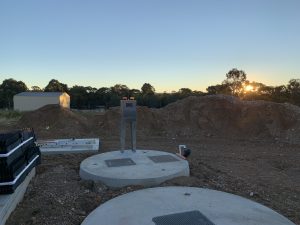Why is Aeration Used in Wastewater Treatment?
Wastewater treatment is a crucial process that involves the removal of contaminants from water. One of the most important steps in this process is aeration. Aeration is the process of adding air to the wastewater to promote the growth of microorganisms that break down organic matter. There are several reasons why aeration is used in wastewater treatment.
1. Oxygen Supply
Aeration is used to provide oxygen to the microorganisms that break down organic matter in wastewater. These microorganisms require oxygen to survive and reproduce. Without enough oxygen, the microorganisms will not be able to break down the organic matter efficiently, which can lead to the accumulation of solids and other contaminants in the wastewater. Aeration provides a constant supply of oxygen, which helps to maintain a healthy population of microorganisms.
2. Odour Control
Wastewater can produce unpleasant odours due to the presence of sulfur compounds and other volatile organic compounds. Aeration can help to control these odours by promoting the growth of aerobic bacteria, which consume the sulfur compounds and other volatile organic compounds. By reducing the concentration of these compounds, the odours associated with wastewater can be greatly reduced.
3. Nutrient Removal
Aeration can also be used to remove nutrients from wastewater, such as nitrogen and phosphorus. These nutrients can cause excessive growth of algae and other aquatic plants, which can lead to a depletion of oxygen in the water. Aeration promotes the growth of bacteria that convert these nutrients into forms that are less harmful to the environment, such as nitrogen gas.
4. Increased Treatment Capacity
Aeration can also increase the treatment capacity of a wastewater treatment plant. By providing a constant supply of oxygen to the microorganisms, the rate of organic matter breakdown can be increased. This allows the treatment plant to process more wastewater in a shorter amount of time, which can be important during periods of high demand.
5. Improved Water Quality
Aeration can greatly improve the overall quality of the water that is discharged from a wastewater treatment plant. By promoting the growth of aerobic bacteria, aeration can help to break down organic matter and other contaminants in the wastewater. This can lead to a significant reduction in the amount of pollutants that are discharged into the environment.
The Benefits of Aeration Used in Wastewater Treatment
1. Enhanced Biological Treatment
Aeration is used to provide oxygen to the microorganisms that break down organic matter in wastewater. These microorganisms require oxygen to survive and reproduce. Without enough oxygen, the microorganisms will not be able to break down the organic matter efficiently, which can lead to the accumulation of solids and other contaminants in the wastewater. Aeration provides a constant supply of oxygen, which helps to maintain a healthy population of microorganisms. As a result, the organic matter in the wastewater is broken down more efficiently, leading to enhanced biological treatment.
2. Improved Nutrient Removal
Aeration can also be used to remove nutrients from wastewater, such as nitrogen and phosphorus. These nutrients can cause excessive growth of algae and other aquatic plants, which can lead to a depletion of oxygen in the water. Aeration promotes the growth of bacteria that convert these nutrients into forms that are less harmful to the environment, such as nitrogen gas. By removing these nutrients, aeration helps to prevent the overgrowth of algae and other aquatic plants, and improves the overall health of the water body where the treated water is discharged.
6. Reduced Sludge Production
Aeration can also help to reduce the amount of sludge that is produced during the wastewater treatment process. Sludge is the solid waste material that is produced when the microorganisms break down organic matter. By providing a constant supply of oxygen, aeration helps to maintain a healthy population of
Conclusion
Aeration is a crucial step in the wastewater treatment process. It provides a constant supply of oxygen to the microorganisms that break down organic matter, controls odours, removes nutrients, increases treatment capacity, and improves water quality. Without aeration, the wastewater treatment process would be much less effective, and the environment would be at a greater risk of contamination.
Eco-Septic is a Sydney-based manufacturer that specialises in commercial wastewater systems of various shapes and designs. We can provide fast and free quotes relevant to your commercial wastewater needs, all while keeping in mind individual spending capabilities.
Contact us today for a fast quote at 1800 808 135 or visit us at www.ecoseptic.com.au.
We cover all Sydney suburbs as well as the regions of South Coast, Snowy Mountains, Southern Highlands, Riverina, Blue Mountains and Hawkesbury, Laguna, North and Mid North Coast, Bateman’s Bay, Nowra, Mallacoota, Narooma, Balmoral, Cobargo, Glenn Ines, Avondale, Glenmore, Mogo, Tarago, Torrumbarry, Albury, Faulconbridge, Maraylya, Sherbrooke, Strathdickie, Little Hartley, Linden, cattail, Bowen Mountain, Murwillumbah, Kyogle, Bryon Bay, Lismore, Evan Heads, Yamba, Grafton and surrounding areas.





